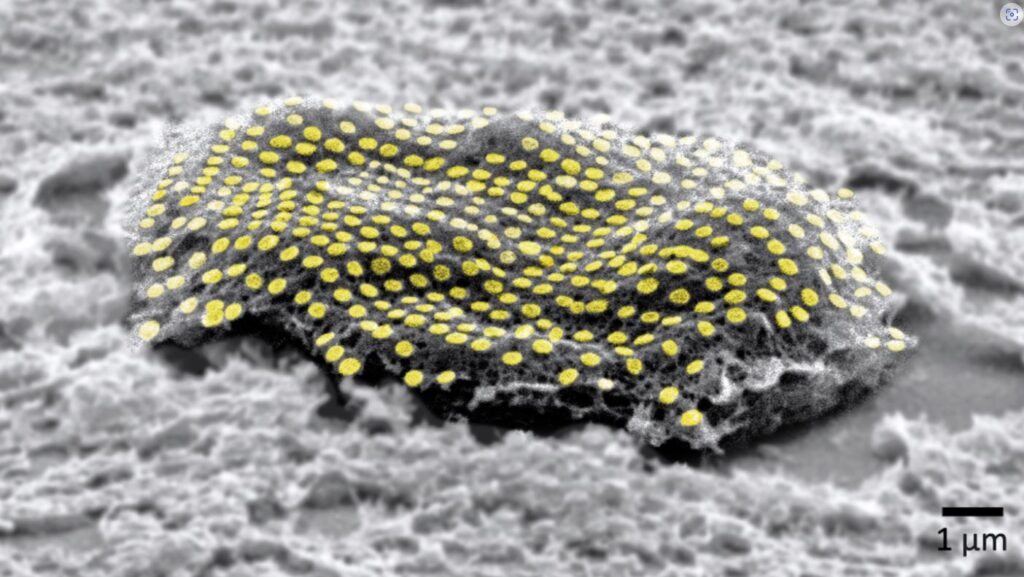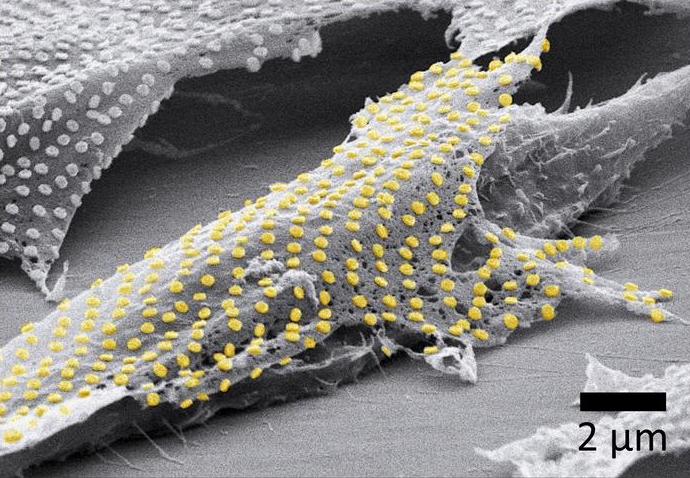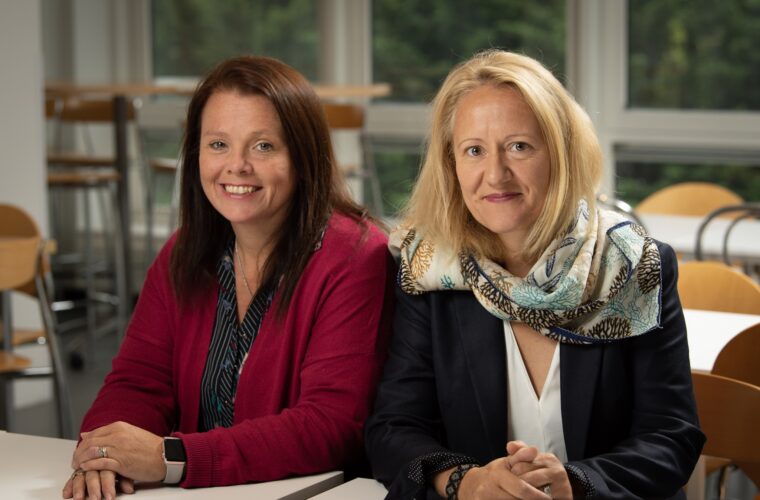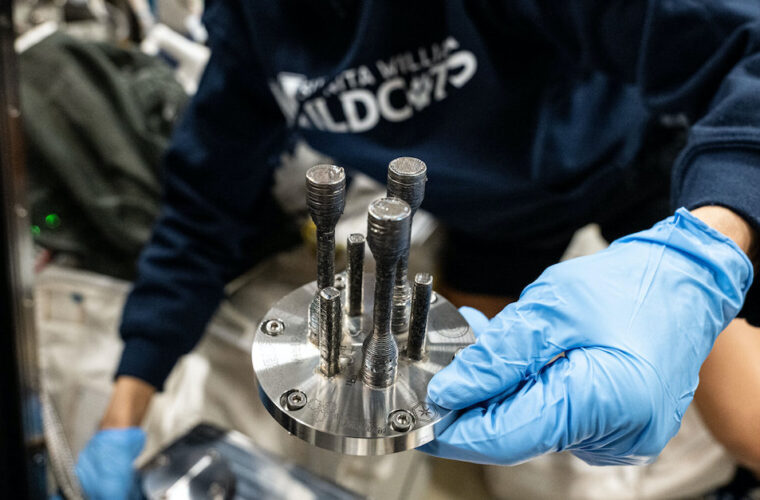Cell tattoo: Currently, the concept of cyborgs remains confined to the realm of fiction, but as scientific advancements continue, it is gradually becoming more believable. In a recent development reported in ACS’ Nano Letters, scientists have unveiled a promising innovation: a method to imprint living cells and tissues with adaptable arrays of gold nanodots and nanowires, akin to a “tattoo.” As this approach undergoes further refinement, it holds the potential to ultimately integrate intelligent devices with biological tissue for various medical applications, including bionics and biosensing.

Cell tattoo
Advancements in electronics have enabled the production of integrated circuits and sensors with nanoscale precision. More recently, techniques like laser printing have allowed the creation of flexible devices capable of conforming to curved surfaces. However, these methods often involve harsh chemicals, high temperatures, or extreme pressure conditions that are unsuitable for use with living cells. Additionally, alternative methods are frequently either too slow or lack precise spatial resolution. To overcome these limitations, David Gracias, Luo Gu, and their collaborators at Johns Hopkins University aimed to develop a non-toxic, high-precision lithographic approach for attaching nanomaterials to living tissue and cells.
The team employed nanoimprint lithography to imprint nanoscale gold lines or dots onto a silicon wafer coated with polymer. Subsequently, the polymer was dissolved, freeing the gold nanoarray for transfer onto a thin glass substrate. The gold was then functionalized with cysteamine and coated with a hydrogel layer. This hydrogel-coated array was affixed to individual live fibroblast cells, with the patterned side of the flexible array/hydrogel layer coated with gelatin. In the final step, the hydrogel was degraded to expose the gold pattern on the surface of the cells. Similar techniques were used to apply gold nanoarrays to either sheets of fibroblasts or rat brains. The experiments demonstrated the compatibility of these arrays with biological systems and their ability to influence cell orientation and movement.

Future plans
The researchers suggest that their cost-effective method has the potential to be employed for attaching various other nanoscale components, such as electrodes, antennas, and circuits, onto hydrogels or living organisms. This opens up promising avenues for developing biohybrid materials, bionic devices, and biosensors.
The American Chemical Society (ACS) is a nonprofit organization chartered by the U.S. Congress. ACS’ mission is to advance the broader chemistry enterprise and support its practitioners for the benefit of Earth and its inhabitants. The Society is a global leader in promoting excellence in science education and providing access to chemistry-related information and research through multiple research solutions, peer-reviewed journals, scientific conferences, eBooks, and the weekly news periodical Chemical & Engineering News. ACS journals are among the most cited, trusted, and widely read within the scientific literature. However, it’s important to note that ACS does not conduct chemical research. As a leader in scientific information solutions, its CAS division partners with global innovators to accelerate breakthroughs by curating, connecting, and analyzing the world’s scientific knowledge. ACS’s main offices are in Washington, D.C., and Columbus, Ohio.”



